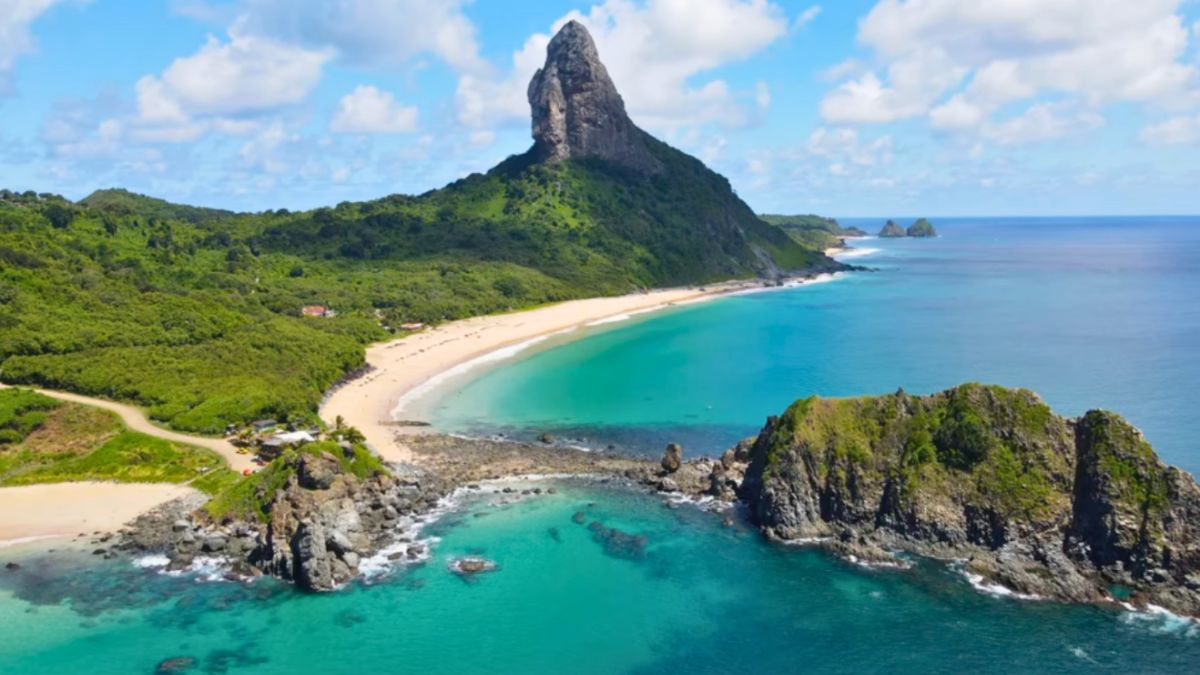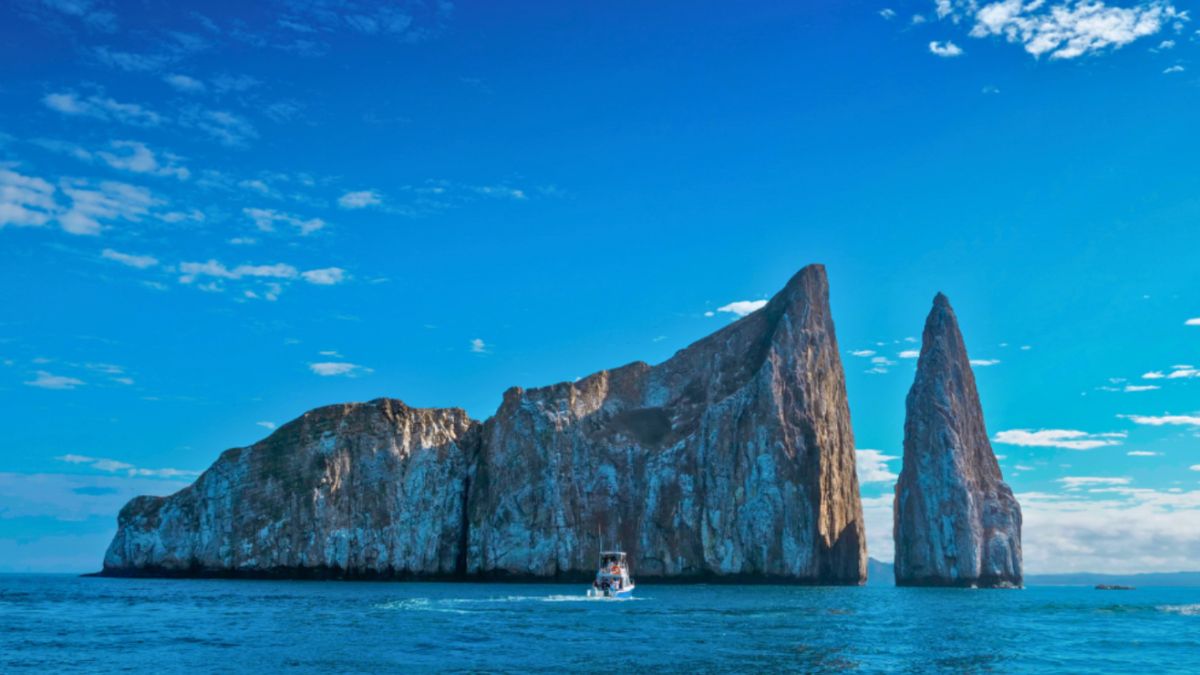Galápagos Island Hopping:
Which Islands Should You Visit?
Galápagos Islands
Planning a trip to the Galápagos Islands can feel overwhelming when you realize there are over 100 islands and islets scattered across this volcanic archipelago. Many travelers struggle to decide which islands deserve their precious vacation time, especially when each location offers unique wildlife encounters and landscapes. The fear of missing out on incredible experiences while dealing with complex logistics and permits can turn dream vacation planning into a stressful nightmare.

Dorian Destinations understands the challenges of planning the perfect Galápagos Islands adventure. Our luxury travel experts have crafted countless unforgettable journeys to this UNESCO World Heritage site, helping discerning travelers experience the magic of Darwin’s living laboratory without the hassle of complicated planning.
Understanding the Galápagos Islands Layout
The Galápagos Islands lie approximately 600 miles off the coast of Ecuador in the Pacific Ocean. This remote archipelago comprises about 127 islands, islets, and rocks, including 19 large islands. Many travel guides highlight 13 “major” islands in visitor itineraries. Four of these—Santa Cruz, San Cristóbal, Isabela, and Floreana—are inhabited, while Baltra hosts the main airport and facilities but does not have a permanent resident population. The islands formed through volcanic activity over millions of years, creating diverse ecosystems that support an incredible array of endemic species.
When planning your Galápagos Islands island hopping adventure, understanding the geography helps you make informed decisions. Many travel guides group the archipelago into Central, Western, Northern, and Southern/Eastern regions to align wildlife viewing and logistics. The Central Islands host many of the most-visited sites; the Northern Islands offer distinctive wildlife encounters; the Western Islands feature dramatic volcanic landscapes and rich marine life; and the Southern/Eastern Islands showcase scenic coastlines with high endemism.
Santa Cruz Island: The Gateway to Adventure
Santa Cruz Island serves as the tourism hub of the Galápagos Islands, making it an ideal starting point for your island hopping journey. Puerto Ayora, the largest town in the archipelago, provides comfortable accommodations, restaurants, and the famous Charles Darwin Research Station. Visitors can observe giant tortoises up close and learn about ongoing conservation efforts that protect these magnificent creatures.
The island offers diverse attractions beyond the research station, including the stunning Tortuga Bay beach and underground lava tunnels. Santa Cruz Island in the Galápagos Islands provides excellent opportunities for snorkeling, hiking, and wildlife photography.
San Cristóbal Island: Where Darwin First Landed

San Cristóbal Island holds historical significance as the first island Charles Darwin visited in 1835 during his exploration of the Galápagos. Today, Puerto Baquerizo Moreno serves as the provincial capital and offers a charming blend of local culture and natural wonders. The island features beautiful beaches where sea lions bask in the sun and marine iguanas sunbathe on volcanic rocks.
Visitors to San Cristóbal in the Galápagos Islands can explore Kicker Rock, a dramatic volcanic formation rising from the ocean. This site offers incredible snorkeling and diving opportunities, with possible sightings of schooling hammerhead sharks, rays, and colorful reef fish.
Isabela Island: The Largest and Most Diverse
Isabela Island represents the largest landmass in the Galápagos Islands, offering incredible diversity in landscapes and wildlife. The island is formed from six volcanic cones, creating unique ecosystems ranging from pristine beaches to highland forests. Puerto Villamil offers a laid-back atmosphere with flamingo lagoons nearby and a local surf break at El Faro.
Isabela offers unforgettable experiences like visiting the Giant Tortoise Breeding Center and hiking to volcanic craters. Visitors can also enjoy snorkeling at Concha de Perla, where sea turtles, rays, and tropical fish create underwater magic.
Floreana Island: Mystery and Natural Beauty
Floreana Island combines intriguing human history with exceptional natural beauty in the Galápagos Islands. The island’s mysterious past, including stories of eccentric European settlers and unsolved disappearances from the 1930s, continues to fascinate visitors today. In a separate historical note, Post Office Bay features the famous barrel postal system, established in the early 1790s (commonly cited as 1793) by whalers.
Wildlife enthusiasts visiting Floreana in the Galápagos Islands will discover American flamingos, green sea turtles, and unique finch species. Devil’s Crown offers spectacular snorkeling with colorful fish, sea lions, and occasional shark sightings.
Santiago Island: Volcanic Wonders and Wildlife
Santiago Island showcases the raw volcanic power that created the Galápagos Islands through its dramatic black lava formations and unique geological features. Puerto Egas offers fascinating tide pools and opportunities to observe fur seals, marine iguanas, and various bird species. The island’s rugged coastline creates stunning photographic opportunities against the backdrop of volcanic landscapes.
Visitors exploring Santiago in the Galápagos Islands can hike across ancient lava flows and discover hidden coves filled with wildlife. The island provides excellent opportunities for observing Galápagos fur seals, which are smaller and less frequently seen than their sea lion cousins.
Española Island: One of the Oldest and a Remote Southern Island
Española Island is among the oldest islands in the Galápagos and supports unique species found nowhere else on Earth. It is the primary breeding ground for waved albatrosses, though a small, irregular colony also exists on Isla de la Plata. These magnificent birds are present on Española from April through December and perform elaborate mating dances. Gardner Bay features a stunning white sand beach perfect for swimming and snorkeling.
The remote location of Española in the Galápagos Islands creates a sense of pristine wilderness that many visitors find magical. Punta Suárez offers dramatic cliff views and opportunities to observe blue-footed boobies, Nazca boobies, and marine iguanas.
Planning Your Island Hopping Route
Creating an effective island hopping itinerary in the Galápagos Islands requires careful consideration of transportation, time constraints, and personal interests. Most visitors choose between cruise-based island hopping or land-based tours with day trips to nearby islands. Each approach offers different advantages depending on your travel style and budget preferences.
The duration of your Galápagos Islands visit significantly impacts which islands you can realistically explore. A 4-5 day trip typically allows visits to 3-4 main islands, while longer stays permit more comprehensive exploration.
Transportation Between Islands
Getting between islands in the Galápagos requires planning. Regular public speedboats connect Santa Cruz, San Cristóbal, and Isabela, with periodic service to Floreana from Santa Cruz (less frequent; check current schedules). Day tours and chartered boats provide access to other islands, though weather conditions can affect schedules. Water taxis provide brief transfers within harbor areas, while inter-island travel is primarily by public speedboats, day tours, or cruise vessels.
Mainland flights operate to Baltra/Seymour Airport (GPS)—located on Baltra Island and connected to Santa Cruz via the Itabaca Channel ferry—and to San Cristóbal (SCY). Isabela (IBB) has limited inter-island flights. Most inter-island travel relies on boats of various sizes, from large cruise ships to smaller tour vessels.
When to Visit Different Islands
Timing your Galápagos island hopping affects wildlife viewing and weather. The warm, rainy season (December–May) generally brings warmer waters, calmer seas, and generally favorable but variable underwater visibility. The cool, dry season (June–November) features colder, nutrient-rich waters that attract pelagic species, with generally rougher seas and lower underwater visibility compared with the warm season.
Different islands in the Galápagos Islands offer unique seasonal highlights that influence optimal visiting times. Waved albatrosses on Española Island are present only from April to December, while marine iguanas typically mate Jan–Apr, nest Jan–Apr, and hatchlings emerge from May–July (timing varies by island).
Frequently Asked Questions
How Many Islands Should I Visit During My Trip?
The number of islands you should visit depends on your trip duration and interests, but most visitors find that 3-4 islands provide a comprehensive Galápagos experience without feeling rushed.
Is It Better to Take a Cruise or Stay on Land?
Whether to take a cruise or stay on land depends on your preferences, with cruises offering convenience and access to remote islands. In contrast, land-based stays provide more flexibility and cultural immersion.
What Is the Minimum Time Needed for Island Hopping?
The minimum time needed for meaningful island hopping in the Galápagos Islands is 4-5 days, though 7-10 days allows for a more comprehensive and relaxed experience.
Can I Visit All the Islands in One Trip?
You cannot realistically visit all islands in one trip, as many require special permits or chartered boats, and attempting too many destinations reduces the quality of each experience.
Customized Galápagos Islands Experiences

The Galápagos Islands offer an unparalleled natural experience that requires thoughtful planning to maximize your island hopping adventure. Each island presents unique opportunities for wildlife encounters, geological wonders, and unforgettable memories that will last a lifetime. Choosing the right combination of islands depends on your interests, available time, and desired level of adventure.
Dorian Destinations creates customized Galápagos Islands experiences that match your preferences and exceed your expectations. Our luxury travel advisors handle all the complex logistics, permits, and reservations while you focus on enjoying this incredible destination.
Dorian Destinations
(305) 440-9200


